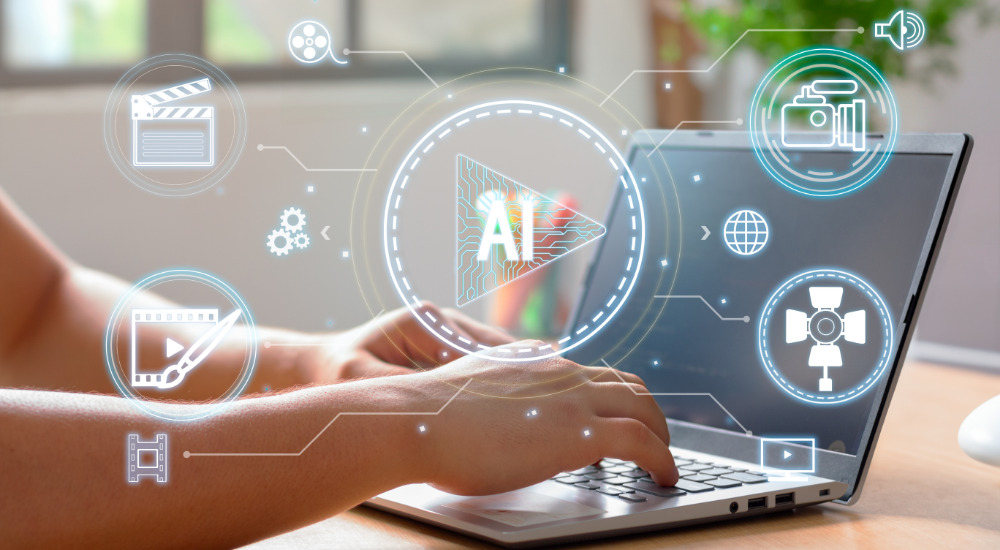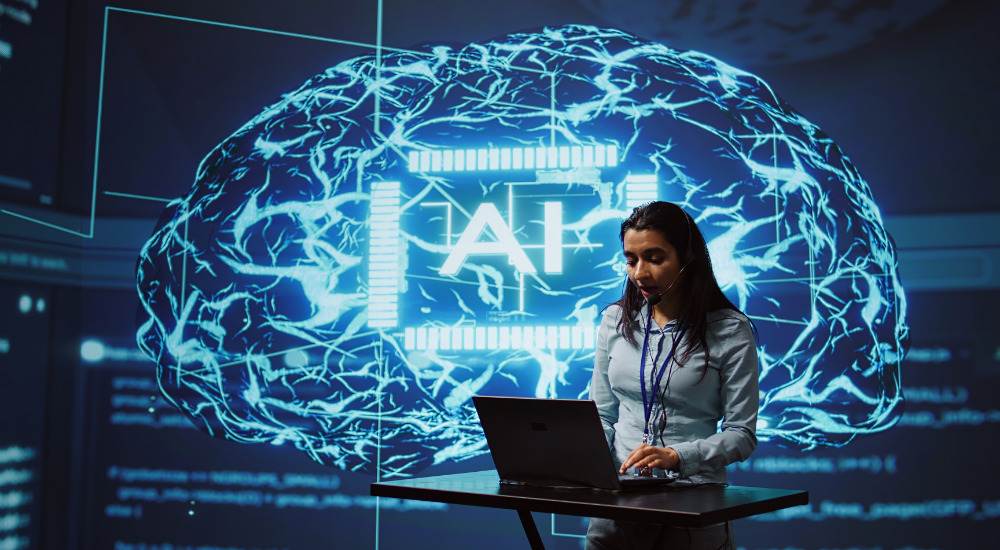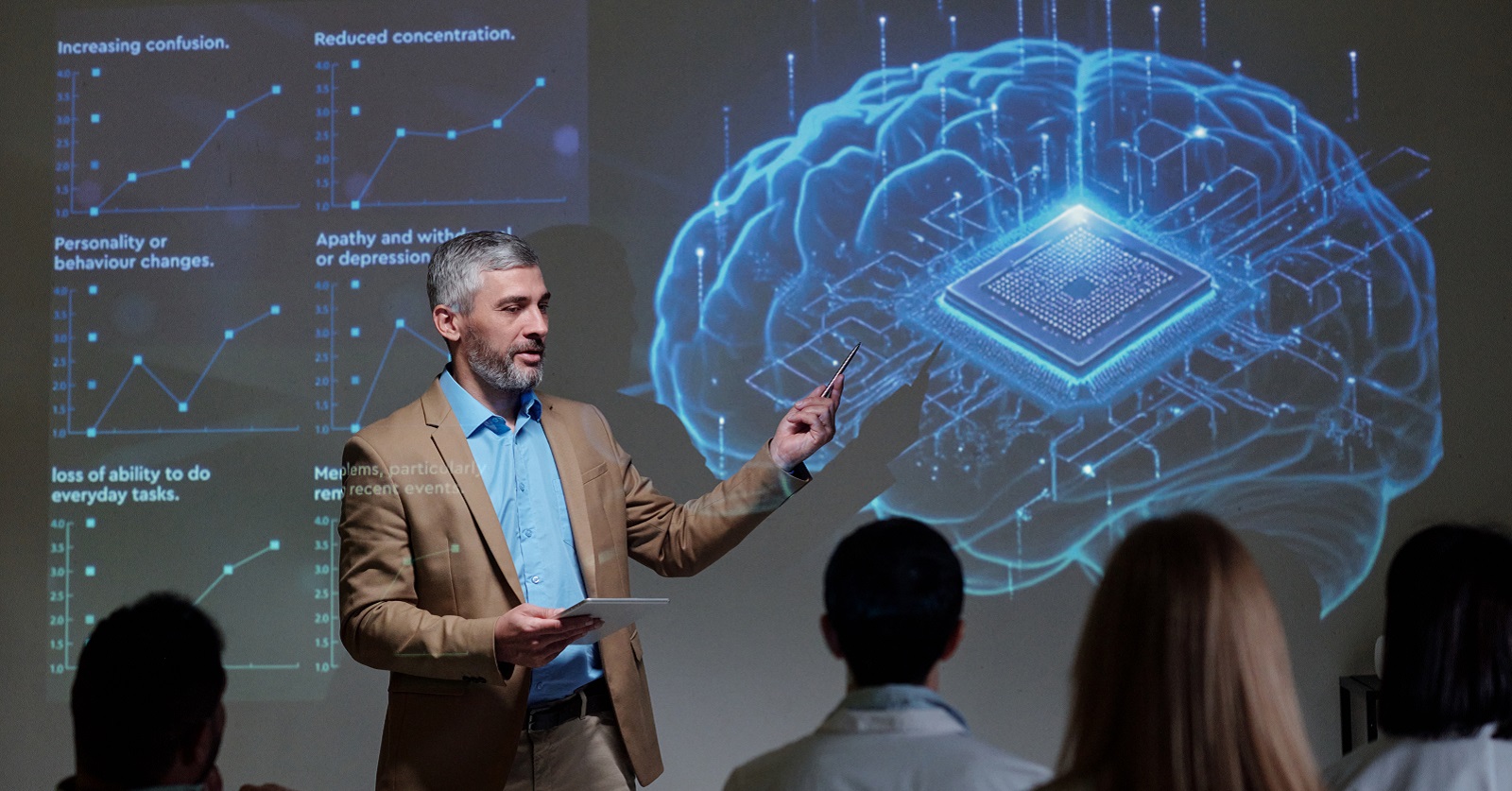Table of Contents
- Chapter 1: What Does Employee Training and Onboarding Look Like Today?
- Chapter 2: How AI is Transforming Employee Training and Onboarding
- Chapter 3: Key Capabilities to Look for in AI-powered Training and Onboarding Software
- 1. Personalized Learning Journeys
- 2. Contextual In-App Guidance
- 3. Real-time Monitoring and Analytics
- 4. AI-driven Content Creation and Management
- 5. Predictive Support and Intervention
- 6. Seamless Integration Across Your Tech Stack
- 7. Scalability and Enterprise Readiness
- 8. Outcome-Driven ROI Metrics
- Quick Evaluation Checklist
- Chapter 4: How Artifically Intelligent DAP Drives Measurable Business Outcomes
- Chapter 5: Building an AI-Driven Onboarding Strategy
- Chapter 6: How to Choose the Right AI-powered Onboarding Platform
- Chapter 7: Apty DAP To The Rescue: AI-powered and Outcome-Focused DAP
- Chapter 8: Real-World Success Stories
- Chapter 9: Common Myths About AI in Onboarding (And the Truth)
- Conclusion: Now Is the Time to Switch to an AI-powered Training and Onboarding Solution
- FAQs
- 1. What core problem does Apty aim to solve for enterprises?
- 2. Can AI-powered training onboarding solutions be used for compliance-heavy industries like healthcare or finance?
- 3. How does AI personalize training and onboarding experiences for different roles within my company?
- 4. How can AI-enabled onboarding and training platforms improve employee engagement during the training process?
- 5. How can DAP solutions help with remote employee training?
- 6. How does AI-powered onboarding help when there are frequent software updates or new tool rollouts?
- 7. Can AI onboarding solutions track the performance and progress of employees over time?
Chapter 1: What Does Employee Training and Onboarding Look Like Today?

When you think about employee training and onboarding, what comes to mind? Probably a flurry of welcome emails, a few clunky LMS modules, a lengthy employee handbook—and an overwhelmed new hire wondering how they will survive their first 90 days.
Here’s the truth: Traditional onboarding is broken.
Despite companies investing millions in enterprise training software and learning management systems (LMS), new employees often feel lost, unprepared, and frustrated. The root cause? Information overload, poor timing of learning, lack of contextual support, and no real measurement of success beyond “completed the training.”
The consequences are severe:
The longer it takes an employee to get up to speed, the more costly it becomes. Studies show that it can take 8-12 months for a new hire to reach full productivity in traditional onboarding models.
Poor onboarding is directly linked to employee attrition. According to Gallup, only 12% of employees strongly agree their organization does a great job onboarding new employees.
When employees don’t fully understand processes, they make mistakes. In regulated industries, this can mean heavy fines and reputational damage.
Confused employees mean more IT tickets, more HR inquiries, and more burden on internal support teams. Each “how do I…” ticket costs valuable time and money.
Perhaps most critically, poor onboarding undermines broader digital initiatives. McKinsey reports that 70% of digital transformation projects fail to meet their goals, and lack of user adoption is a top reason why.
Why Traditional LMS and One-time Training Can’t Keep Up
Training sessions and LMS courses are static. Meanwhile, software environments are dynamic. Apps update monthly. Processes change quarterly. Organizational priorities shift constantly. Traditional methods can’t keep pace.
Employees don’t need more training. They need:
- Contextual help at the moment of need
- Personalized guidance based on their role and task
- Continuous enablement, not just one-time orientation
The “one and done” mindset has failed. Companies must consider onboarding a continuous journey aligned with real workflows—not a box to check during an employee’s first week.
The Cost of Getting It Wrong
A broken onboarding experience doesn’t just hurt new hires — it hurts the entire business.
- $10,000 – $30,000 per employee in lost productivity for delayed ramp-up
- 20-30% higher voluntary turnover when onboarding is poor
- 25-40% drop in process compliance in poorly trained teams
- Millions in unrealized software ROI due to low adoption rates
Yet, many companies still rely on outdated employee training software and onboarding methods, hoping that “more training” will solve the problem. It won’t.
Similarly, in recruitment, platforms like ApplyIQ are helping organizations streamline candidate evaluation and improve hiring outcomes through AI-driven insights.
A New Paradigm Is Needed
Fixing employee onboarding isn’t just about making new hires “feel good.” It’s about driving faster, smarter, more sustainable business outcomes.
To do that, enterprises must:
- Shift from static training to dynamic, AI-driven enablement
- Deliver guidance in the flow of work, not outside it
- Personalize the learning journey for every employee
- Continuously monitor, optimize, and measure onboarding success
This is where AI-powered employee training and onboarding software enters the scene—and it’s transforming the way companies prepare their teams for success.
Let’s now look at how exactly AI is reshaping onboarding and why it’s a strategic imperative for modern enterprises.
Chapter 2: How AI is Transforming Employee Training and Onboarding

AI isn’t just another buzzword in corporate learning—it’s fundamentally reshaping the way organizations train and onboard employees. Traditional onboarding and training have always relied heavily on human effort: classroom sessions, scheduled webinars, and static e-learning modules. These approaches are costly, hard to scale, and often fail to meet employees in their moment of need. AI changes all of that.
What AI Brings to the Table
- Hyper-Personalization: AI adapts onboarding experiences to each employee’s role, past behavior, and performance gaps. No two employees get the exact same journey—they get what they need when they need it.
- Contextual In-the-Moment Assistance: Rather than asking employees to memorize processes during training, an AI-powered digital adoption platform like Apty guides users at the exact moment they are performing a task—reducing errors and boosting confidence.
- Real-Time Skill Gap Detection: AI continuously monitors how employees interact with systems and identifies areas where they struggle, prescribing targeted content or guidance to close gaps instantly.
- Continuous Learning: AI ensures that learning never stops. As software evolves, AI updates the guidance automatically, ensuring employees stay current without formal retraining sessions.
- Automated Content Creation: Generative AI capabilities speed up the creation of onboarding content—like checklists, walkthroughs, and tooltips—dramatically reducing time and cost for L&D and IT teams.
- Predictive Insights: By analyzing user behavior and engagement trends, AI can predict who might need additional support, allowing proactive intervention before productivity or morale suffers.
With Apty’s AI-enabled platform, enterprises deliver predictive guidance, automate repetitive tasks, and optimize user experiences across their tech stack.
Real Examples of AI in Action
- Conversational UI for Everyday Tasks: Employees interact with software using a natural, chat-like interface, making task execution intuitive and faster.
- Automated Form-Filling Across Apps: AI detects common workflows across multiple apps (like Salesforce and Workday) and assists users in completing tasks without manual data re-entry.
Predictive Alerts: Before a user commits a common error in a system, AI proactively prompts them with the right action—saving costly mistakes in finance, HR, and compliance workflows.
These aren’t future dreams. They’re available today, and companies deploying AI-enabled DAP like Apty are already reaping the rewards.
Let’s dive deeper into what specific capabilities you should look for when selecting a next-gen intelligent employee training and onboarding platform to ensure you maximize your investment.
Chapter 3: Key Capabilities to Look for in AI-powered Training and Onboarding Software

Choosing an AI-based employee training and onboarding solution isn’t about ticking a few feature boxes. It’s about ensuring the platform delivers real, measurable business value while making life easier for your employees, trainers, and IT teams.
Here are the essential capabilities you should look for:
1. Personalized Learning Journeys
Not every employee needs the same information at the same time. Look for a platform that:
- Tailor onboarding paths based on roles, departments, or user behavior
- Adapts dynamically as users progress and master tasks
- Prioritizes critical workflows and de-emphasizes non-relevant features
2. Contextual In-App Guidance
Forget traditional “training modules.” Your solution must provide real-time help inside the application while employees are performing tasks. Look for:
- Step-by-step workflows triggered by specific actions
- Smart tooltips and hotspots embedded within software interfaces
- Error prompts and proactive hints when users struggle
3. Real-time Monitoring and Analytics
If you can’t measure it, you can’t improve it. Your platform should offer:
- Deep analytics into user behavior, task completion, and engagement
- Insights into process bottlenecks and compliance gaps
- Cross-application tracking for workflows that span multiple systems
“Apty measures what actually matters—errors avoided, processes completed, and business performance accelerated.”
4. AI-driven Content Creation and Management
Onboarding content needs to be agile. Choose a solution that:
- Supports low-code/no-code content creation
- Automate workflows, checklists, and help content with GenAI
- Offers dynamic updates when processes or software versions change
5. Predictive Support and Intervention
Proactive is the new reactive. Your AI solution must:
- Detect patterns of user struggle before they escalate
- Recommend corrective actions or workflows based on predictive insights
- Alert admins to at-risk users or processes
6. Seamless Integration Across Your Tech Stack
Modern enterprises operate on ecosystems, not isolated apps. Ensure the platform:
- Works across CRM, ERP, HCM, ITSM, and other critical systems
- Connects user workflows across applications without disruption
- Supports Single Sign-On (SSO) and other security frameworks
7. Scalability and Enterprise Readiness
You’re not just solving for one app or department. Your onboarding platforms should:
- Scale across thousands of users
- Support multi-language and global rollouts
- Handle complex permissioning and governance requirements
8. Outcome-Driven ROI Metrics
Finally, make sure the platform helps you prove its worth with metrics such as:
- Reduction in onboarding time
- Decrease in support tickets
- Increase in process compliance rates
- Boost in software adoption and data quality
- Time to achieve positive ROI
Quick Evaluation Checklist
| Feature | Must-Have |
| Personalized Learning Paths | ✓ |
| Contextual In-App Assistance | ✓ |
| Real-Time Analytics & Monitoring | ✓ |
| GenAI Content Creation | ✓ |
| Predictive Support | ✓ |
| Cross-Application Workflow Support | ✓ |
| Enterprise-Grade Security & Compliance | ✓ |
| Outcome Reporting (ROI, KPIs) | ✓ |
Apty’s next-gen digital adoption platform, powered by GenAI, checks all these boxes and goes beyond, offering predictive user enablement, real-time optimization, and measurable business impact.
Chapter 4: How Artifically Intelligent DAP Drives Measurable Business Outcomes

For employee onboarding, speed, precision, and efficiency aren’t just nice-to-haves—they’re non-negotiables. Traditional onboarding platforms, while helpful, often fail to address the underlying problem: the connection between employee productivity and the ROI of enterprise software.
AI-driven digital adoption and onboarding platforms are uniquely positioned to solve this problem. They don’t just accelerate the onboarding process—they make it more effective, engaging, and aligned with real business objectives.
1. Accelerating Time to Competency
Onboarding efficiency isn’t just about checking boxes. It’s about ensuring employees hit the ground running and are equipped to perform their jobs at the highest level. AI speeds up this process in several ways:
- Contextual Learning: AI serves up information at the precise moment employees need it, reducing the time they spend searching for answers and increasing their learning retention.
- Personalized Onboarding: AI tailors the experience to each individual employee’s needs, ensuring they aren’t overloaded with irrelevant information.
- Automated Support: Rather than waiting for help, employees can get immediate, in-the-moment assistance, reducing dependency on support teams.
Measurable Outcomes: Faster Onboarding and Reduced Ramp-Up Time
- 50% faster onboarding times compared to traditional methods
- 30% reduction in time-to-competency for employees
2. Increasing Software Adoption Rates
It’s not enough for employees to simply complete training—they need to use the software in real-world situations. AI helps improve adoption rates in two key ways:
- In-the-Flow Guidance: AI delivers guidance directly inside the software, reducing the friction caused by disconnected training materials and improving employee confidence.
- Real-Time Monitoring: AI continuously monitors how employees are interacting with software, identifying bottlenecks and providing additional support when needed.
Measurable Outcomes: Higher Adoption and Reduced Errors
- 25-40% higher software adoption rates for employees using AI-enabled onboarding tools
- 30% fewer errors in business-critical processes, thanks to real-time support and task-specific guidance
3. Boosting Process Compliance and Reducing Risk
Enterprise software is often used to manage complex, regulated business processes—whether it’s compliance, finance, or healthcare. In such environments, ensuring process adherence is critical. AI-driven onboarding helps achieve that by:
- Providing Corrective Guidance: AI can detect when employees are about to make a mistake and provide corrective feedback in real time.
- Monitoring Compliance: AI ensures that users are following the correct processes and procedures, preventing costly errors and compliance issues.
Measurable Outcomes: Improved Process Compliance
- 45% higher process compliance rates compared to traditional onboarding
- 30% reduction in compliance-related errors across teams
4. Reducing Support Costs and IT Burden
Traditional onboarding often comes with a high price tag—not just in training costs but in ongoing support. AI-driven platforms drastically reduce the need for manual support:
- Self-Service Training: With AI providing in-the-moment guidance, employees can resolve issues themselves without submitting tickets or requiring IT intervention.
- Predictive Support: AI can predict and address potential issues before they escalate, reducing the volume of support requests.
Measurable Outcomes: Cost Savings and Efficiency Gains
- A 30% reduction in IT support tickets related to onboarding and training
- A 25% decrease in training-related costs due to automation and content optimization
5. Improving Employee Satisfaction and Retention
A positive onboarding experience is directly correlated with employee engagement and retention. AI plays a major role in creating an environment where employees feel supported and confident in their roles:
- Personalized and Adaptive Learning: AI adapts to each user’s learning style and pace, ensuring they feel empowered, not overwhelmed.
- Instant Help: Instead of waiting for an IT or HR specialist to intervene, employees get immediate help, increasing satisfaction.
Measurable Outcomes: Higher Employee Satisfaction
- 35% increase in employee satisfaction with training and onboarding processes
- 20% improvement in employee retention in the first 6 months after onboarding
AI-based onboarding is no longer just a convenience—it’s a strategic necessity. By driving faster time-to-competency, improving software adoption, enhancing process compliance, reducing support costs, and boosting employee satisfaction, AI ensures your organization maximizes the value of every employee and every software investment.
Let’s now explore how to build a successful AI-powered onboarding strategy and the steps to ensure your implementation delivers the best possible outcomes for your business.
Chapter 5: Building an AI-Driven Onboarding Strategy

AI-powered onboarding is an incredible tool, but it requires a well-thought-out strategy to maximize its potential. Simply implementing a tool without aligning it with your business goals, technology ecosystem, and change management processes won’t deliver the outcomes you’re expecting.
In this chapter, we’ll walk through the key steps for building a successful AI-driven onboarding strategy, ensuring that your enterprise reaps the full benefits of an intelligent, scalable, and efficient onboarding solution.
Step 1: Diagnose Your Current Onboarding Process
Before you can implement intelligent onboarding, you need to understand the challenges in your current process. This involves:
- Reviewing your existing onboarding workflows
- Identifying gaps where employees are struggling to learn
- Analyzing training completion rates, user feedback, and support tickets
- Reviewing software adoption rates and compliance metrics
Key Questions to Ask:
- Are your employees using software as intended? If not, why?
- What’s the current time-to-competency, and how can it be improved?
- Where do most support requests come from, and how can they be prevented?
Once you’ve diagnosed the areas that need improvement, you can align your AI-driven onboarding solution to address those gaps directly.
Step 2: Align Your AI Strategy with Business Goals
AI-based onboarding is most effective when it is aligned with your business goals. Whether you’re looking to improve process compliance, reduce errors, or speed up time to competency, you need to ensure that your AI solution is driving the outcomes that matter most to your business.
- Link AI to Key Business Metrics: Connect the use of AI in onboarding to KPIs like employee productivity, software adoption, and ROI on tech investments.
- Ensure Continuous Monitoring: Set up regular checkpoints to evaluate progress towards these business goals. AI allows for continuous monitoring and insights, so strategies can be adjusted as needed to improve outcomes.
Step 3: Choose the Right AI Platform
Not all digital adoption solutions are created equal. When evaluating a digital adoption platform, make sure it meets the following criteria:
- Personalization: The platform must offer personalized learning paths based on each user’s role, past behavior, and learning style.
- Contextual Assistance: It should provide in-the-flow guidance directly inside the software, minimizing disruptions and improving user confidence.
- Scalability: The platform must be able to scale across multiple departments, applications, and even geographies if needed.
- Integration Capabilities: Look for a solution that integrates seamlessly with your existing enterprise software, including your CRM, ERP, HCM, and other systems.
Apty’s AI-driven platform checks all of these boxes, offering a scalable, personalized solution that delivers measurable business results.
Step 4: Build the Content and Workflows
AI needs content to drive the learning experience. This content must be aligned with your business processes, user personas, and workflows.
- Create Modular Learning Units: Break down your content into bite-sized, role-specific learning units that can be dynamically presented based on the user’s progress.
- Map Out Key Business Processes: Identify the business-critical processes employees need to understand (e.g., CRM data entry, ERP order processing, etc.) and create training workflows that guide users through these tasks.
- Use AI to Automate Content: With Apty, content creation is simplified with its GenAI capabilities, which can generate targeted training content and workflows based on user interactions.
Step 5: Integrate AI with Change Management Processes
AI-driven onboarding is a change initiative, and like any change, it must be managed effectively. To ensure smooth adoption and long-term success:
- Engage Stakeholders Early: Involve L&D, IT, and business leaders in the strategy from the outset to ensure alignment across teams.
- Communicate the Value: Clearly articulate the value of AI-driven onboarding to employees, emphasizing the personalized, continuous support they will receive.
- Provide Ongoing Training: Offer training for employees and managers on how to make the most of the new AI-powered onboarding system.
Tip: Start small with one department or team and expand as you see success. AI-powered onboarding is scalable, and starting with a pilot program allows you to demonstrate value before full-scale deployment.
Step 6: Continuously Optimize and Measure Success
The beauty of AI is that it learns and adapts. To fully leverage this, you must continuously monitor, measure, and optimize your onboarding experience.
- Monitor Engagement: Use AI analytics to track how employees interact with training content, pinpointing areas where they may need additional support.
- Measure Business Outcomes: Connect onboarding data to real business outcomes like software adoption, process compliance, and employee productivity.
- Iterate and Improve: Regularly update your content, workflows, and AI-driven interventions based on the insights gathered from user behavior.
Tip: Set up quarterly reviews to assess the impact and tweak the strategy for maximum benefit.
In the next chapter, we’ll explore how to choose the right AI-powered onboarding platform for your organization to ensure you maximize its value.
Want to build a more effective training strategy? Read more about this: 8 Steps to Create an Ideal Workplace Training Plan Template
Chapter 6: How to Choose the Right AI-powered Onboarding Platform

Choosing the right AI-powered onboarding platform is crucial to ensure you maximize your investment in employee training. With so many options available, it can be overwhelming to determine which platform is best suited to your organization’s needs. In this chapter, we’ll provide a step-by-step guide to help you choose the right solution for your company.
Step 1: Identify Your Goals and Objectives
Before selecting an AI-powered onboarding platform, it’s important to define what you want to achieve with the system. Your goals should be aligned with your business objectives and address the key pain points your organization faces.
Common onboarding goals include:
- Reducing training time and costs
- Increasing software adoption and usage
- Improving employee productivity and retention
- Ensuring compliance with business processes
- Enhancing employee engagement and satisfaction
By identifying your specific goals, you can narrow down the features and functionalities you need from the platform.
Step 2: Evaluate Platform Features
Once you’ve identified your goals, evaluate the features of each AI-powered onboarding platform. Some key features to consider include:
- Personalization: Does the platform provide personalized learning paths based on user roles, departments, and prior knowledge?
- Contextual Assistance: Does the platform offer in-the-flow guidance that helps employees when they need help?
- Real-Time Analytics: Does the platform provide actionable insights into user engagement, performance, and software adoption?
- Integration Capabilities: Does the platform integrate seamlessly with your existing software stack (CRM, ERP, HCM, etc.)?
- Scalability: Can the platform scale to accommodate growth in users, departments, and software applications?
- Automation: How does the platform automate content creation, content updates, and performance tracking?
- AI and Predictive Features: Does the platform use AI to predict potential issues, identify skills gaps, and provide proactive solutions?
Step 3: Consider Ease of Use and Implementation
The best AI-powered onboarding platforms are intuitive and easy to implement. Consider the following when evaluating ease of use and implementation:
- User Interface (UI): Is the platform easy to navigate for both administrators and end-users?
- Implementation Time: How long will it take to set up and deploy the platform across your organization?
- Support and Training: Does the vendor offer sufficient support during implementation and post-launch?
- Customization: How customizable is the platform to meet your company’s specific needs and branding?
Step 4: Assess Vendor Reputation and Customer Support
When selecting an AI-powered onboarding platform, it’s important to consider the vendor’s reputation and the level of customer support they provide. Look for a vendor that:
- Has a proven track record of successful implementations and positive customer feedback
- Offers strong customer support during the implementation phase and ongoing use
- Provides resources like training materials, FAQs, and a knowledge base
- Offers ongoing product updates and enhancements to keep the platform current and relevant
Step 5: Test the Platform with a Pilot Program
Before fully committing to an AI-powered onboarding solution, it’s wise to test the platform with a pilot program. This allows you to:
- Evaluate usability and effectiveness in a real-world setting
- Gather feedback from users and stakeholders to identify areas for improvement
- Assess the ROI of the platform by comparing training times, adoption rates, and other KPIs
A pilot program can help you determine whether the platform is a good fit for your organization before making a full investment.
Step 6: Analyze Cost and ROI
Finally, consider the cost of the platform and the potential ROI. While AI-powered onboarding solutions are an investment, they typically provide significant returns by improving efficiency, reducing training costs, and increasing productivity. Look for a platform that offers:
- Clear pricing models: Understand whether the vendor charges per user, per application, or with a flat fee.
- ROI metrics: Ensure that the platform provides the data necessary to track ROI, including metrics like time-to-competency, software adoption rates, and employee retention.
- Scalable pricing: Consider how the pricing model will scale as your organization grows.
Let’s now look at how Apty is bridging the gap in employee training and onboarding with its intuitive AI-powered Digital Adoption Platform.
Chapter 7: Apty DAP To The Rescue: AI-powered and Outcome-Focused DAP

Apty is not another DAP; it is an AI-powered Digital Adoption Platform (DAP) designed to help enterprises drive software adoption, improve employee productivity, and achieve measurable business outcomes. Unlike traditional DAPs, Apty goes beyond simply guiding users through applications; it integrates predictive AI to ensure that every employee across every department is empowered to use software efficiently and effectively.
Apty stands out in the crowded DAP market by focusing on business outcomes first and adoption second. Most DAPs prioritize feature coverage, but Apty takes a different approach by measuring real ROI on software investment and driving operational efficiency at scale. Here’s how:
- Outcome-Focused: While traditional DAPs focus on delivering tools and guidance, Apty ensures that each interaction within an application contributes directly to business objectives, such as improving productivity, increasing software adoption, and ensuring compliance.
- Data-Driven Approach: Apty’s unique data capabilities allow it to monitor user behavior, track key metrics, and provide insights that highlight where interventions are needed. This allows for continuous improvement and optimization.
Personalization at Scale: With Apty OneX, training and guidance are dynamically tailored to each user, ensuring that employees receive only the most relevant information at the moment they need it.
How Apty’s AI Capabilities Amplify Employee Productivity
Apty’s AI capabilities are designed to drive productivity by providing predictive guidance and automated content that adapts to each employee’s needs. Here’s how:
1. Predictive Guidance at Task Level
Apty doesn’t just wait for employees to request help—it anticipates when and where they will need it. By analyzing employee interactions, Apty predicts where employees might struggle with a task and delivers real-time guidance just in time to help them succeed.
- Task-level Guidance: Whether an employee is using a CRM, ERP, or HR system, Apty predicts what they’re trying to achieve and provides proactive instructions to guide them through the process.
- Reduction in Error Rates: Predictive interventions ensure that employees avoid common mistakes, leading to higher-quality data entry, fewer support tickets, and better compliance with business processes.
2. Cross-Application Workflow Enablement
Today’s enterprise software landscape is filled with multiple, often siloed applications. Apty bridges the gap by enabling cross-application workflows. Employees can easily navigate between systems like CRM, ERP, HCM, and others with seamless guidance and optimized user experiences.
- Workflow Integration: Apty tracks user journeys across different applications and ensures that employees receive guidance no matter which system they are working in. This allows for unified workflows that improve efficiency.
- Reduced Switching Costs: Employees don’t waste time switching between apps or trying to figure out how to move tasks from one application to another. Apty makes cross-application work fluid and intuitive.
3. Automated Content Building and Personalization
One of Apty’s standout features is its ability to automate content creation. Through GenAI, Apty automatically generates targeted onboarding content, training materials, and even in-app guidance. This reduces the burden on HR and L&D teams while ensuring that every employee receives content tailored to their learning needs.
- Dynamic Learning Paths: AI-driven personalization ensures that employees receive role-specific training and task-specific guidance without manual intervention.
- Efficient Content Delivery: Apty creates and updates in-app training content automatically as software updates or business processes change.
4. Visualizing and Improving Employee Software Journeys in Real-Time
With Apty, you can see and understand how employees interact with software. Real-time visualizations of the employee’s software journey enable organizations to spot friction points and identify opportunities for intervention.
- Journey Mapping: Apty’s visualization tools show where users struggle, which features they avoid, and where they excel. This enables data-driven decisions to improve the onboarding and training experience.
- Optimization: By continually tracking and analyzing employee behavior, Apty provides insights into how to optimize workflows, reduce errors, and increase overall software adoption.
Apty’s Differentiator: Business Outcomes First, Adoption Second
Apty’s focus on business outcomes ensures that its platform delivers more than just adoption rates. While adoption is important, Apty knows that its ultimate value comes from how well its solution drives business results.
- Measurable ROI: By tracking key metrics such as productivity improvements, time-to-competency, and error reduction, Apty helps businesses directly tie DAP usage to business outcomes.
- Continuous Improvement: Apty’s AI ensures that businesses don’t just get initial results—they continue to improve over time. The platform helps organizations stay agile by continuously adapting content and guidance based on real-time employee behavior.
- Long-Term Impact: Apty’s ability to integrate deeply with applications and workflows ensures that software adoption is not a one-time event but an ongoing process that directly impacts the bottom line.
The Business Value of Apty AI-powered Digital Adoption Platform
Apty doesn’t just make onboarding faster or easier—it delivers tangible business outcomes:
- 50% faster employee onboarding times
- 30% fewer support tickets
- 25-40% higher process compliance
- 3.4x ROI in the first year
The combination of improved time-to-competency, higher data quality, and lower support costs translates directly into bottom-line gains.
Ready to experience the power of Apty’s Next-Gen AI digital adoption platform? Book a demo and see how it works!
Let’s explore some real-world case studies to see how businesses are leveraging Apty’s AI-driven onboarding platform to achieve tangible results.
Chapter 8: Real-World Success Stories

Case Study 1: Major US Airline
Challenge: One of the largest airlines in the world, operating a fleet of over 800 aircraft, faced difficulties in onboarding and training engineers on their project management software, Clarity PPM. Traditional training methods were insufficient, leading to data-entry errors, inefficient project planning, and poor adoption of the system.
Solution: The airline turned to Apty, a digital adoption platform, to provide real-time guidance and support. Apty’s guided workflows, data validation, and training features helped engineers navigate the Clarity PPM system effectively. The platform offered step-by-step instructions and ensured compliance with industry regulations.
Results:
- 3X increase in productivity for engineers
- 70% decrease in time spent on Clarity PPM
- 3x reduction in Clarity PPM support tickets
- 100’s of hours saved by eliminating user support tickets

Case Study 2: Global Bank
Challenge: A leading financial institution that provides full banking, lending & investment services to over 26 million customers at over 1,200 locations in the USA struggled with Clarity PPM adoption despite extensive training. Employees faced challenges with complex navigation, inaccurate data entry, and low productivity.
Solution: The bank implemented Apty’s AI platform to optimize user experience and improve Clarity PPM adoption. Apty provided step-by-step guidance, real-time data validation, and analytics to proactively identify and address training roadblocks.
Results:
- $275K saved on user adoption and training
- 80% reduction in adoption time
- $30K in savings in support and maintenance costs
- Users onboarded in 3 months.

Case Study 3: Global Conglomerate
Challenge: With over 350,000 employees across 600 subsidiaries, this multinational conglomerate faced challenges in unifying training and adoption processes across diverse systems like Workday, SAP, and Oracle. The company sought a way to streamline training for a globally dispersed workforce.
Solution: Apty’s platform enabled the company to overlay its existing systems with a unified digital adoption strategy. Apty helped centralize training and onboarding, making it easier for employees to adopt new software and processes while also reducing the need for printed manuals.
Results:
- Streamlined training for 350,000+ employees
- Reduced carbon footprint by eliminating the need for printed manuals
- Increased digital adoption across subsidiaries without additional manual work
- Significant time and cost savings due to the centralized adoption process
In the next chapter, we’ll explore common myths about AI in onboarding and the truth behind these misconceptions.
Chapter 9: Common Myths About AI in Onboarding (And the Truth)
AI-enabled employee training and onboarding is a transformative tool, but it’s also the subject of many myths and misconceptions. In this chapter, we’ll break down some of the most common myths about AI in onboarding and reveal the truth behind these misunderstandings.
Myth 1: AI Will Replace Human Trainers
The Truth: AI isn’t here to replace human trainers but to empower them. AI can automate repetitive tasks like content creation, data entry, and process monitoring, freeing up trainers to focus on high-impact activities like coaching, mentorship, and strategic development. Instead of replacing human trainers, AI serves as a force multiplier, improving the efficiency and effectiveness of the training process.
Example: AI tools like Apty can automate the creation of training content, but trainers still play a critical role in personalizing the learning experience and providing human context to the content.
Myth 2: Artificially Intelligent Onboarding Is Only For Large Enterprises
The Truth: While AI-powered onboarding is highly beneficial for large enterprises, it’s not exclusive to them. In fact, small and mid-sized companies can benefit from AI-driven solutions as well. AI makes it easier to scale training and onboarding programs, meaning that businesses of any size can leverage it to improve efficiency, reduce costs, and increase productivity.
Example: A small manufacturing company with 100 employees may benefit from AI-driven onboarding by reducing the time it takes for new hires to get up to speed, cutting support costs, and ensuring compliance with industry regulations.
Myth 3: AI-based Onboarding Is Too Complex To Implement
The Truth: AI onboarding systems, such as Apty, are designed to integrate seamlessly with your existing tech stack. With easy installation and no heavy IT requirements, AI onboarding can be up and running in just days. In fact, platforms like Apty are designed to be intuitive and user-friendly, meaning that HR and L&D teams can implement them with minimal technical expertise.
Myth 4: AI Doesn’t Provide a Human Touch
The Truth: While AI is often associated with automation and machine-driven interactions, modern AI platforms are designed to complement the human experience, not replace it. AI can provide personalized, real-time support while also allowing employees to reach out for human assistance when needed. It’s all about balancing technology with the personal touch that employees value.
Example: Apty’s AI gives employees context-specific help and prompts, but if an employee prefers to speak to a human, they can easily escalate to a support agent who will continue to guide them through the process.
Myth 5: AI Will Lead to Job Losses in L&D and HR
The Truth: AI will not replace jobs in L&D or HR—it will enhance them. In fact, AI can free up time for L&D and HR professionals to focus on more strategic and impactful work. By automating repetitive tasks, AI helps HR and L&D teams focus on talent development, employee engagement, and improving organizational performance.
Example: L&D managers using AI tools like Apty can focus on designing strategic learning programs and measuring business outcomes while the platform takes care of content creation and performance tracking.
Myth 6: AI Is Just a Trend
The Truth: AI in onboarding is not a passing trend—it’s a fundamental shift in the way we think about learning and employee development. With the rise of AI, organizations now have the ability to create smarter, more scalable, and more effective onboarding experiences. AI is here to stay, and its role in employee training will continue to expand as the technology matures.
Example: AI-powered onboarding platforms like Apty are already being used by leading enterprises across various industries. As the technology becomes more integrated into business processes, the demand for AI-driven solutions will only increase.
AI-powered onboarding is a game-changer that’s already transforming employee learning and development. Therefore, by debunking these myths, we hope to clear up some of the confusion surrounding technology. The truth is that AI can help organizations of all sizes deliver more personalized, efficient, and cost-effective training and onboarding experiences.
Conclusion: Now Is the Time to Switch to an AI-powered Training and Onboarding Solution
AI-driven onboarding is no longer a “nice-to-have”—it’s a strategic necessity for modern enterprises. With the fast-paced business world and complex software ecosystems, organizations must ensure their employees can effectively use enterprise software from day one. Traditional onboarding methods simply cannot keep up with the need for agility, personalization, and scalability that businesses require to thrive. As the landscape of employee training and onboarding evolves rapidly, organizations that adopt AI-powered digital adoption solutions today will gain a significant competitive advantage over those that wait.
By leveraging AI-powered and outcome-focused digital training and onboarding platforms, businesses can:
- Accelerate time-to-competency for new hires, helping them become productive faster.
- Boost software adoption rates and ensure tools are being used effectively across teams.
- Enhance process compliance and minimize errors, driving operational efficiency.
- Provide continuous, personalized learning that evolves with employees throughout their careers.
- Drive measurable ROI by increasing employee productivity and reducing training costs.
- Streamline training to get employees up to speed more quickly and efficiently.
- Gain real-time insights and analytics, enabling continuous improvements in learning outcomes.
- Increase employee satisfaction and retention with engaging, tailored onboarding experiences.
- Maximize software ROI, ensuring employees make the most of your enterprise applications.
Adopting AI for onboarding today will not only help you streamline processes but also future-proof your organization. As AI technology continues to improve, the businesses that are already leveraging it will be able to unlock even more powerful capabilities, giving them an edge over competitors who are still relying on outdated methods.
Partner With Apty To Streamline Your Enterprise Training & Onboarding Experience
At Apty, we understand the challenges of modern software adoption and employee training. Our next-gen Digital Adoption Platform (DAP) is designed to help organizations like yours deliver smarter, faster employee enablement.
Apty supports enterprises by offering:
- Personalized Onboarding: An AI-driven platform with personalized learning journeys and in-app guidance.
- Seamless Integration: It integrates with existing enterprise applications for real-time assistance.
- Predictive Analytics: Monitors employee performance and software adoption to identify potential issues.
- Measurable ROI: Tracks key metrics to demonstrate clear ROI on onboarding investment.
Partnering with Apty means you’re not just implementing another DAP tool—you’re investing in an AI-powered solution that will transform how your organization trains, supports, and empowers its employees.
Let’s work together to build an onboarding strategy that drives success and fosters continuous employee growth.
Contact our experts today to schedule a demo or visit our website to learn more about Apty’s capabilities.
FAQs
1. What core problem does Apty aim to solve for enterprises?
AI-powered onboarding is suitable for most organizations, especially those with complex software ecosystems and a need to scale their training. If you’re struggling with traditional onboarding methods, such as lengthy training periods, inconsistent software adoption, or high support costs, AI-powered solutions can be the right answer. Key indicators that you’re ready include:
- Rapid software updates that need constant employee training
- High turnover or low employee retention
- Slow productivity ramp-up for new hires
- Struggles with employee engagement in training programs
2. Can AI-powered training onboarding solutions be used for compliance-heavy industries like healthcare or finance?
Yes, AI-enabled onboarding and training is highly beneficial for compliance-heavy industries. It can automate and ensure adherence to complex regulations by:
- Providing real-time compliance checks during software use
- Tracking certification and training progress automatically
- Delivering consistent, up-to-date content tailored to industry-specific guidelines
- Offering audit trails and automated reporting for compliance reviews
This ensures that your employees are not only proficient in using the tools but also meet regulatory standards.
3. How does AI personalize training and onboarding experiences for different roles within my company?
AI personalizes onboarding by analyzing employee data such as job roles, skill levels, and performance. It delivers tailored learning experiences based on this information:
- Role-Specific Learning Paths: AI creates unique training plans for each department, ensuring employees receive only relevant content.
- Adaptive Learning: AI adjusts content delivery based on how quickly employees progress, ensuring each individual receives the appropriate level of challenge.
Contextual Assistance: Employees get in-app, task-specific guidance relevant to their current job responsibilities, enhancing role-specific training.
4. How can AI-enabled onboarding and training platforms improve employee engagement during the training process?
AI makes onboarding and training engaging by offering personalized, interactive learning experiences:
- Gamification: AI integrates reward systems and leaderboards to motivate employees and turn training into a more engaging experience.
- Real-time feedback: Instead of waiting for end-of-course evaluations, AI offers instant feedback, helping employees stay motivated and on track.
- Adaptive Content: AI continuously adjusts the complexity of learning material based on an employee’s performance, keeping the training challenging but not overwhelming.
5. How can DAP solutions help with remote employee training?
AI-powered DAP platforms are ideal for remote employee training because they offer:
- Self-Paced Learning: Employees can complete training at their own pace from anywhere, reducing the dependency on in-person or live sessions.
- 24/7 Support: AI-powered chatbots and virtual assistants are available around the clock, providing employees with instant support regardless of time zone.
Cloud-Based Access: AI platforms are hosted on the cloud, making it easy for remote employees to access learning resources from any device.
6. How does AI-powered onboarding help when there are frequent software updates or new tool rollouts?
With frequent software updates, AI ensures your employees stay current by:
- Automatically updating training content to reflect the latest software versions, ensuring employees are learning the most up-to-date processes.
- Proactively alerting users when a new update is rolled out, with specific training or guidance on what has changed.
Streamlining change management by providing in-app updates without overwhelming employees with unnecessary information.
7. Can AI onboarding solutions track the performance and progress of employees over time?
Absolutely. AI platforms offer advanced analytics that allow organizations to:
- Track employee progress with real-time metrics, including time spent on training, completion rates, and skill development.
- Identify performance gaps: AI can pinpoint areas where employees may be struggling and automatically adjust training content to fill those gaps.
- Generate Reports: Customizable reports allow managers to monitor the effectiveness of onboarding programs and ensure that employees are progressing as expected.
